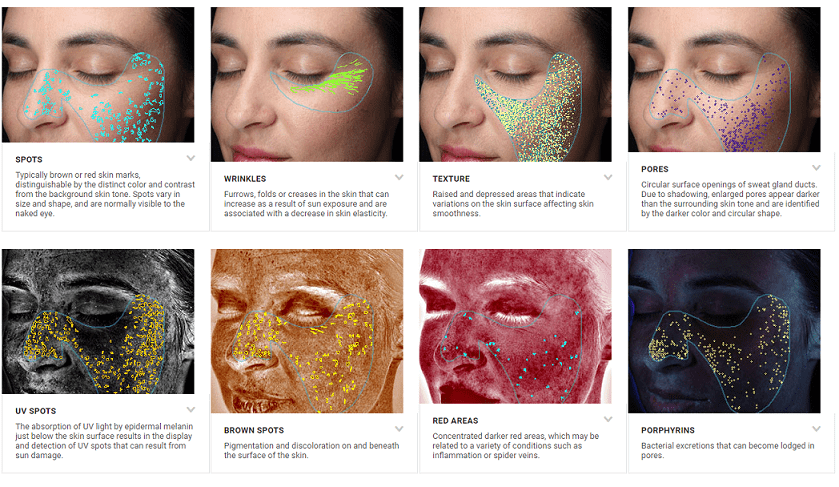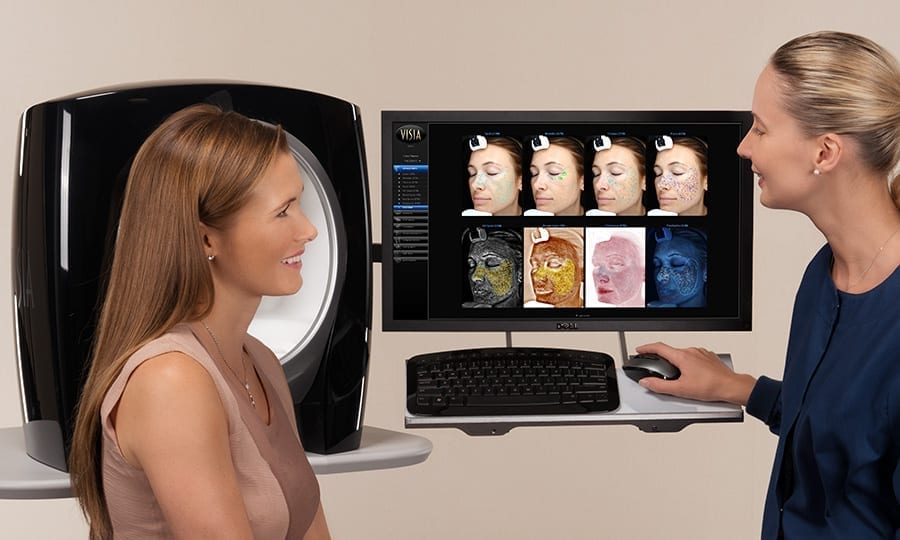Visia Complexion Analysis
We are proud to offer one of the most comprehensive and advanced skin analysis technologies available here at Suddenly Slimmer Med Spa. The VISIA™ Complexion Analysis system allows our experienced skin care professional to see intricate details of your skin beyond that which can be determined by the naked eye. With VISIA™, we are able to give you a very precise visual representation of your skin, which can enhance communication between you and our skin care professional as you discuss your treatment options. The technology also gives us the ability to provide customized treatment plans and more accurately measure progress over time.
Have questions about Visia Complexion Analysis? Call us 602-952-8446 | Book Online
The VISIA™ Complexion Analysis involves taking a highly magnified digital picture of your skin. The image captures details on the depth of wrinkles, skin tone, pigmentation, sun damage, pore size, sebum levels, and irregularities in skin texture. VISIA™ also examines porphyrins – telltale signs of bacteria that lodge in pores, often leading to acne. VISIA™’s comprehensive skin analysis allows us to compare your skin with others of similar ethnicity, gender, and age. This comparison helps our skin care professionals in the creation of an individualized skin care treatment plan. Phoenix Schedule Your VISIA Complexion Analysis If you would like to schedule a VISIA™ Complexion Analysis, please contact Suddenly Slimmer Med Spa today 602-952-8446.







